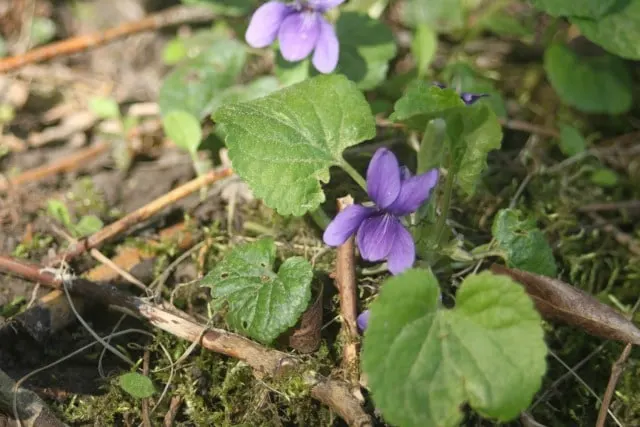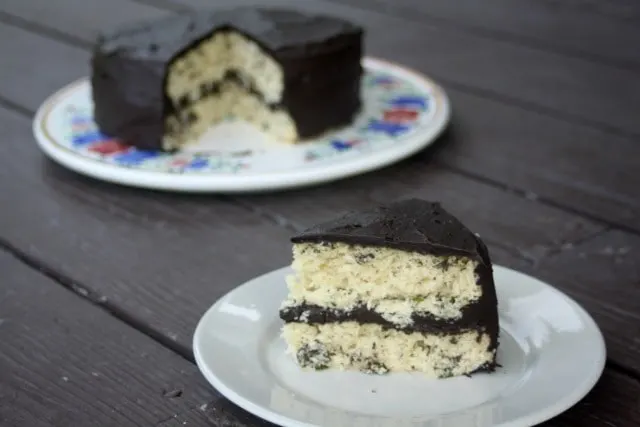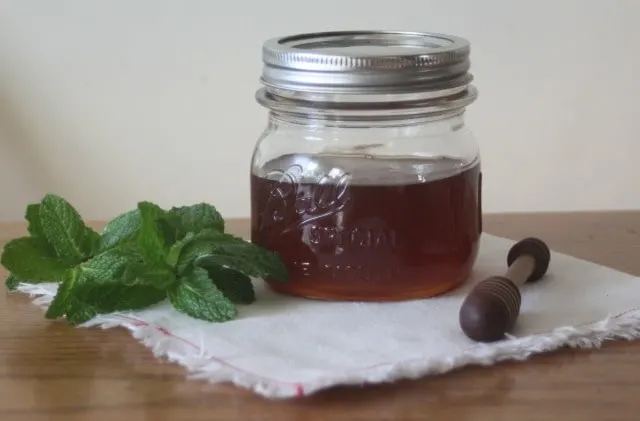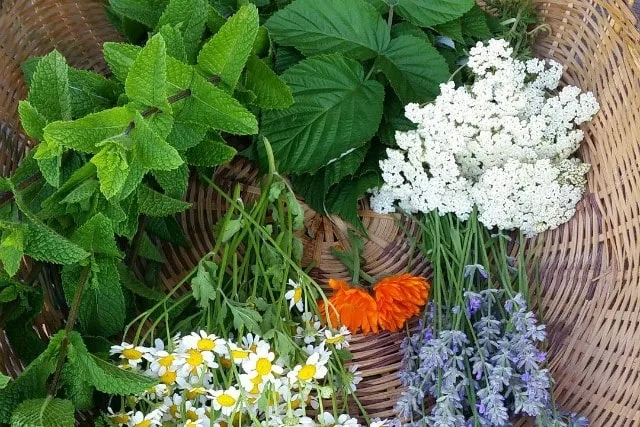My interest in using herbs for food and medicine grew quite naturally out of the love of gardening and plants. Using herbs well in our home like anything else in life it takes practice. Thankfully, it’s enjoyable and easy practice. I use these 10 habits on a weekly if not daily basis to grow my herbalism skills so I know they can help you too.
1. Create a Personal Materia Medica
This is essentially an herbal journal. A record of plants and their uses. There are numerous books and websites for information, of course, but a materia medica should be completely personalized. This is your notebook, a personalized study of plants you use and have available to you. It can include purchased herbs, of course, but it is the book that you use for your own study and growth not that of some other herbalist.
The Herbal Academy offers a great course on creating a materia medica that can truly help guide you if this is a new concept. I took the course and learned so very much for it, myself.
2. Wildcraft
Harvest (responsibly) from the wild. This does not have to be exotic or hard to identify items at all. Gather dandelion flowers, wild roses, red clover, and other local items that can be used for food and medicine.
Seeing herbs and useful plants growing in their natural environments is a great way to grow not only in our herbalism skills but in our seasonal living ones as well. There is no better way to understand the natural cycle of the earth than to get out into nature.

Keep track of these wild harvests in your journal. Not only the harvest but how you use them – were they eaten as food or used in some kind of remedy?
3. Cultivate Herbs
Whether you have acres or a windowsill, grow a few herbs. Start with herbs that you use most. Grow some mint for food and medicinal use. Have some rosemary in a pot on the windowsill for cooking. Grow raspberries for the fruit but harvest some of the leaves for tea as well.
Tending to herbs through their entire growing process, watching them flower, etc. gives a huge appreciation for their flavors and benefits.
4. Bring to the Table
Toss those herbs into every meal, drink them, bake them into cookies. Many culinary herbs also have medicinal benefits but beyond that, they are simply tasty. Cooking with herbs is a great way to grow into a home herbal practice. Use their flavor and medicinal benefit as a way to keep health at the forefront of every meal plan. Cooking with herbs is also a great way to simply take advantage of the abundance of edible things growing in the yard.

My herbal cookery e-course contains 5 lessons to help you get herbs from the garden to the table. It includes lessons on preservation, drinks, main courses, desserts, and more.
5. Preserve Herbs
Herbs can be preserved in a number of different ways for different uses. This is a great way to understand the differences in flavor and use for fresh versus dried or frozen herbs. Make big batches of pesto and freeze it. Dehydrate bunches of herbs for tea or medicine-making later. Simply gather them in-season and save them for those seasons when they can’t be found fresh.
6. Create Body Products
Body butters, salves, lotions, and lip balms are little more than oils infused with herbs and mixed with some beeswax. Sometimes those creations are whipped sometimes essential oils are added but it is truly a simple and frugal project to tackle at home. These simple projects are a great introduction to more in-depth herbal projects and are supremely useful around the home.
7. Make Medicine
Treat your household bumps, cuts, illnesses, and more with herbs whenever possible. This should not replace trained medical advice when necessary but we can often take care of many things like small bits of indigestion, bug bites, cuts, mild coughs, and more with simple remedies used by humans for millennia.

Make the cup of herbal tea. Create a medicinal tincture. Infuse herbs in honey for a sweet and relieving syrup. Keep it simple and practical to your household’s needs but do try herbs and see what they can do for you.
8. Never Stop Learning
Always be curious and willing to step up your herbalism game. Read books, take classes, go on herb walks. We’re so blessed in this day and age with a multitude of online sources, books, videos, and more from which to learn.
For herbal studies, look for the same information repeated in a variety of sources. When looking for information on mint, for example, read a book by a well-known herbalist, look for historical uses, and ask a trusted practitioner before taking the advice of the first online source you come across.
9. Share Gifts
Gift your herbal creations to others. Make lotions for birthday gifts. Share jars of dried herbs as get well gifts. This isn’t about being preachy or anything of the sort. It’s simply about normalizing herbs so that they can be a part of your life and a way to share the natural world and your passions with loved ones. This sharing and gifting preserves traditions and can sometimes ignite interest in others who didn’t know where to begin until they knew they could ask you.

10. Teach
Pass on the skills you have when the opportunity presents itself. Teach a formal class if that’s your thing. Write an article for your church newsletter. Help children make herbal gifts. It doesn’t have a big grand thing, it just needs to be the desire to pass on what you’ve learned to a willing ear. Again, this preserves traditions that can so easily be lost in our fast moving society and helps everyone gain a better knowledge of the natural world.
As those herbs grow and fill the stalls of your local farmer’s market be sure to use them for food and medicine. Use these 10 habits as a way to grow your herbalism skills and make the healing, natural world a part of your daily life.
Do you have a favorite habit or practice that you use to grow your herbalism skills?


Jennifer Dawn
Saturday 23rd of January 2021
I started growing and harvesting medicinal herbs this year. I have nicely stocked herbal apothecary for medicinal herbal teas, herbal salves, tinctures , bath teas and more.
Vanessa
Wednesday 18th of April 2018
I am soo happy I found you! You are beautiful and thank you for sharing your love for Nature, plants and herbal medecine. ??? I am excited about gardening and harvesting to become more self sustainable this year. My land has so many native plants and I have seeded lots of good stuff indoor waiting for the snow to melt. Viva Canada haha. Hugs and love your way xo
Kathie Lapcevic
Thursday 19th of April 2018
Thank you so much for stopping by and saying hello! I'm so glad to know that you found useful things here.
leatrice gulbransen
Monday 4th of September 2017
Beautiful article ! I love your stuff. So easy to understand. And doesn't confuse or pressure me. Thanks so much~
Kathie Lapcevic
Wednesday 6th of September 2017
Thanks so much for saying so!
Stormy Stevenson
Monday 24th of July 2017
Love this article. I've been focusing a lot on 6 & 7 currently, our household products have slowly been getting a much needed overhaul. I love the the idea of incorporating herbs into food though. This is something I definitely want to be experimenting with. Thanks.
Simonne
Tuesday 23rd of May 2017
Thanks so much for your guidance. I've been dabbling in growing herbs for cooking, and I have a tea garden. I'm discovering which herbs I like best for tea, and medicinal purposes. I treasure your articles! In the photo in this article can you tell me what is the white daisy looking flower/herb? I've got these popping up in my garden and planters. Thought it might be wild camomile, but pictures I've seen don't have the same leaf as in this photo. Thanks for your help!
Homespun Seasonal Living
Tuesday 23rd of May 2017
Oh, thank you for this - I'm so glad to know these articles are helpful to you. The white petaled, yellow center flower in this photo is feverfew (Tanacetum parthenium) and it can be slightly invasive in many parts of the country. It is in the same plant family (Asteraceae) as daisies & chamomile for that matter.